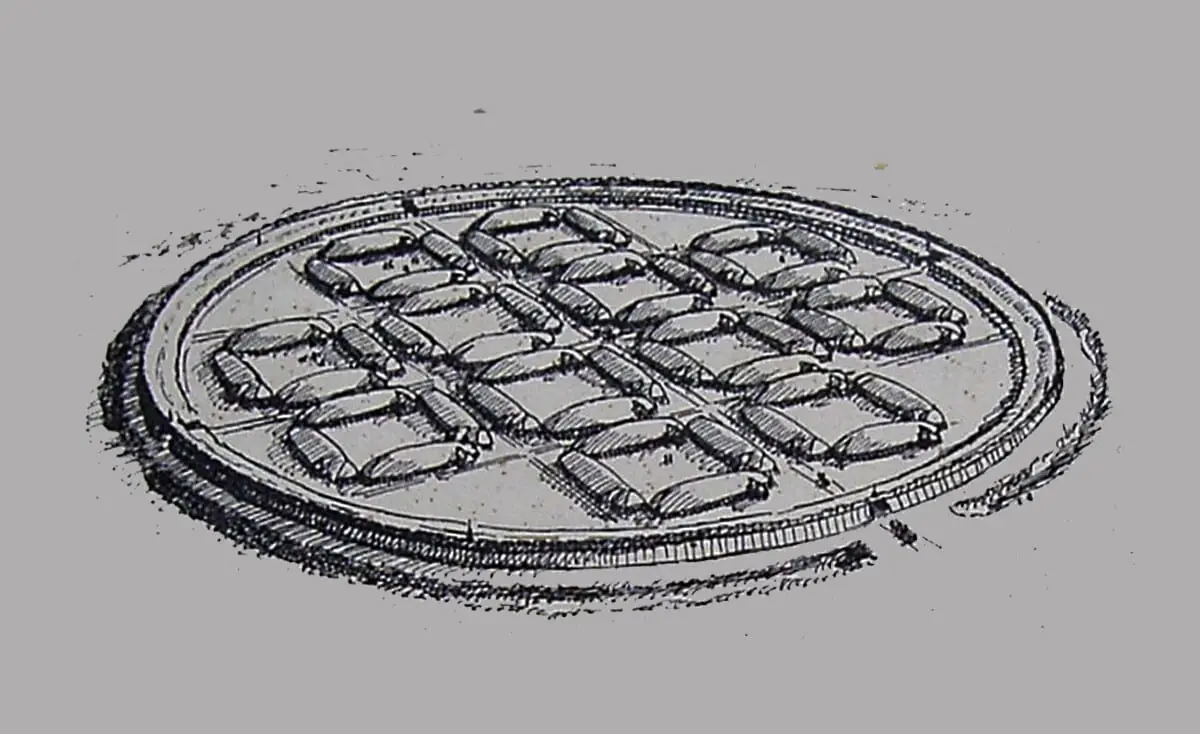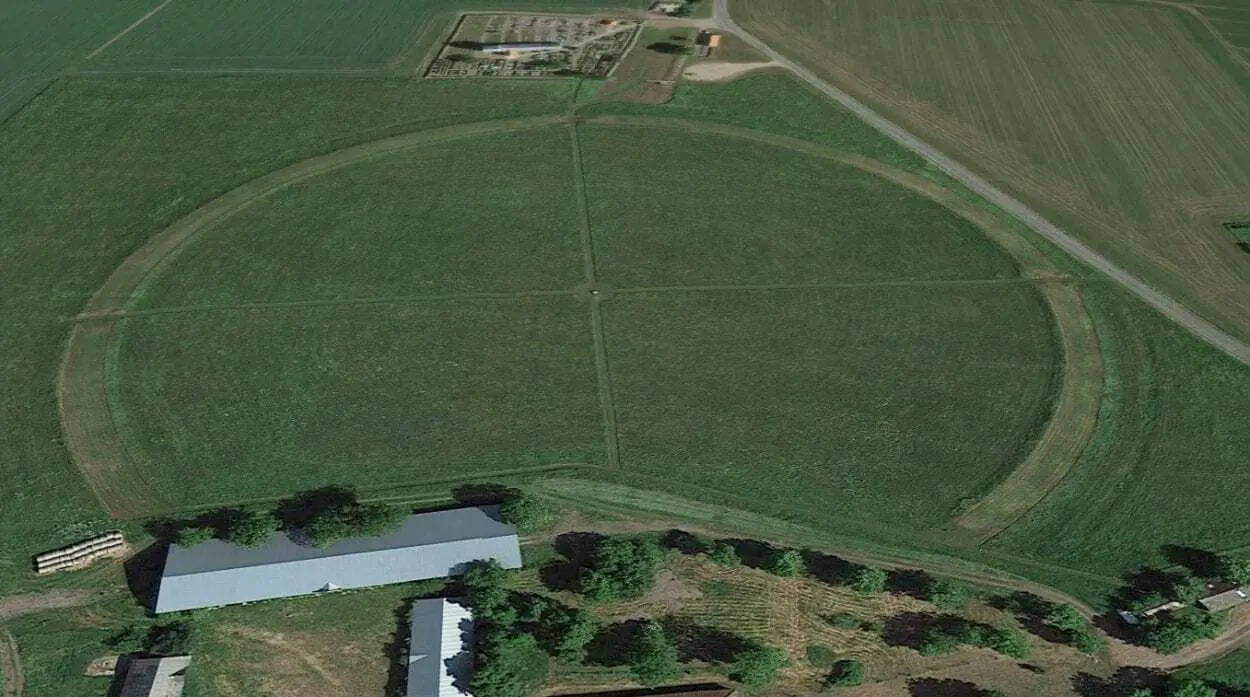Aggersborg is the site of a Viking trelleborg (ring fort), that was built near Aggersund on the north side of the Limfjord in Denmark.
A trelleborg was a geometrical circular fortification that usually contains a cross section of roads separating four internal quadrants, pointing in the four cardinal directions towards gated entrances.
Trelleborgs were built across numerous sites of strategic importance in areas of Denmark and Sweden, and are mostly attributed to Harold Bluetooth (a King of Denmark and Norway who ruled from AD 958–986), who was attributed with introducing Christianity to Denmark.
Aggersborg is Denmark’s largest trelleborg and dates from the Viking age between AD 970-980 (although archaeologists have also discovered that the fort overlaid an earlier Viking-Age rural settlement consisting of sunken huts connected with a couple of large farms), either during Harold Bluetooth’s reign, or that of his successor Sweyn Forkbeard.
The fort was strategically situated near a narrow passage of the Limfjord, a principal sailing route between the Baltic and the North Sea, and near the ancient Hærvejen trackway.

The site measures 240 metres in diameter, with an eight-metre wide berm and ditch. Archaeologists believe that the fort also contained 48 longhouses measuring 32 metres in length, with the entire complex housing a garrison of up to 5,000 men.
The houses had curved roofs and sides, similar in form to that of a ship and were divided by a long inner hall with smaller rooms at each end. Researchers estimate that each house required 66 oak trees in their construction, with the total number of houses and ramparts using around 5,000 trees.
The purposes of Aggersborg’s construction is still debated, with one theory suggesting that the fort, along with several other trelleborgs were built in response to Harald Bluetooth losing control of the Danevirke (a system of Danish fortifications in Schleswig-Holstein, Germany), and parts of Southern Jutland to the Saxons.
It has also been suggested that the fort was a staging ground or barracks during the rule of Sweyn Forkbeard, to supply troops for his raids against England during the years AD 1002–1005, 1006–1007, and 1009–1012 to avenge the St. Brice’s Day massacre of England’s Danish inhabitants on Friday the 13th of November AD 1002, by King Æthelred II (also known as Æthelred the Unready).
Archaeological finds of pottery, jewellery, and tools have demonstrated that the site was inhabited for 20-30 years, until its abandonment in the early 11th century AD.
Header Image Credit : Google Earth







